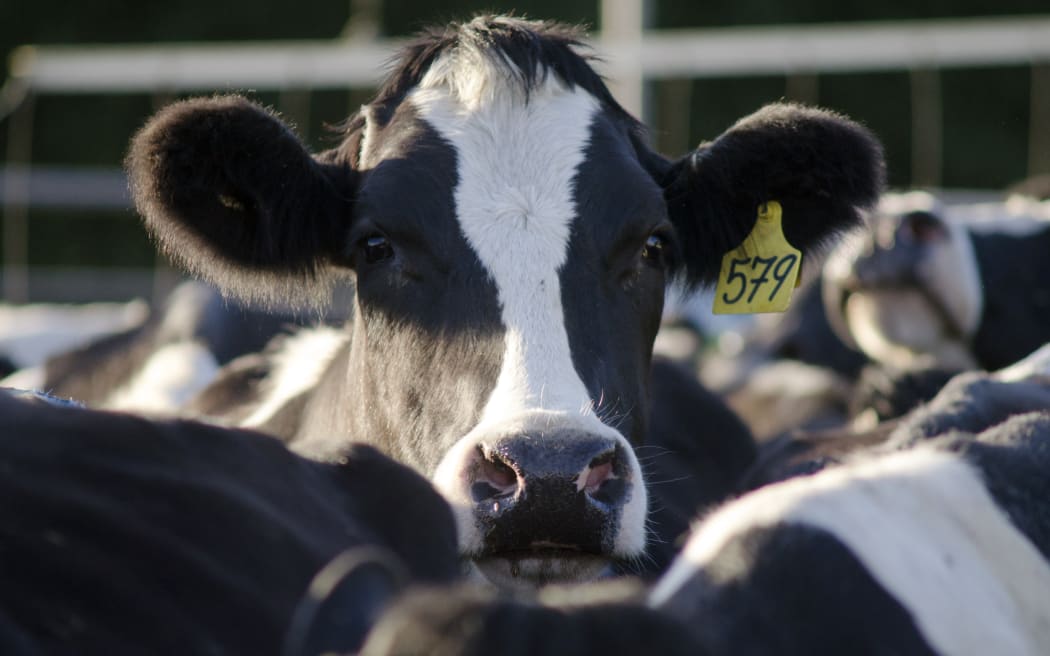
New Zealand produces around 21 million metric tonnes of milk a year. Photo: 123rf
China, New Zealand's biggest dairy export market, is on pace to become the world's third largest milk-producing country, something that could be expected to trouble the sleep of our exporters watching and waiting for China's dairy import appetite to recover.
Chinese net total dairy product import volumes fell 15.7 percent year on year in 2023, with imports of whole milk powder - a major New Zealand export product - down 39 percent, according to Rabobank.
Other visibly weaker imports included liquid milk and cream (-17 percent), yoghurt (-10 percent), butter (-9 percent) and infant milk formula (-16 percent). (On the brighter side, imports of skim milk powder and cheese, also strong New Zealand exports, and whey powder, had year-on-year growth of 3 percent, 22.5 percent and 9.5 percent respectively.)
While Rabobank is forecasting China's total net dairy imports to grow 1.1 percent this year, it cautions that the country's property downturn and weaker economic growth could limit the recovery of dairy consumption, with the potential for Chinese people to choose to increase their savings as household wealth and consumer confidence fall.
In the background, China's domestic milk production and processing sophistication has been building.
Between 2019 and 2022, China's milk production showed a compound annual growth rate of 7.1 percent, reaching just under 40m metric tons in the 2022 year, data from China official reports and Rabobank shows.
New Zealand produces around 21 million metric tons of milk a year, so "calm the farm" our dairy leaders could say.
Particularly as China's milk production growth slowed last year along with its economy, and leading dairy companies reported warnings of net profit loss or sharp declines in FY23 net profit.
Fewer dairy cattle imports also resulted in slower production growth, says Rabobank Research analyst Michelle Huang in a report. Cow imports from the Oceania region shrank 75 percent last year due to less favourable on-farm economics and New Zealand's ban on live cattle exports by sea.
Rabobank forecasts 2 percent growth in milk production this year and a further slowdown in the first half of next year.
All that said, New Zealand dairy leaders are keeping an eye on China's domestic milk-production growth, which has been supported by government incentives and encouragement for the development of large-scale dairy farms and cultivation of high-quality feed.
From 2015 to 2020 the percentage of dairy farms with more than 1000 cattle increased from 24 percent to 44 percent, says Rabobank. It expects large-scale dairy farms to account for 56 percent of China's herd by the end of next year.
This growth, and the general focus on building a domestic dairy industry, is being driven by Chinese government policies to ensure food security. China is the largest importer of dairy products in the world.
The value of New Zealand's dairy exports to China in the first 11 months of 2023 totalled $6.1 billion, down 4.1 percent on the same period in 2022, according to the Ministry of Foreign Affairs and Trade.
In January, tariffs on milk powder were removed, meaning New Zealand dairy products can now enter China duty-free. The move was part of the New Zealand-China Free Trade Agreement, first negotiated in 2008.
New Zealand is the largest exporter of dairy product to China, with an estimated 42 percent market share in 2023. Other key importers include the US, Germany and Australia. China accounts for 35 percent of all New Zealand dairy exports, according to the Ministry for Primary Industries. Just under half of New Zealand volume is made up of powders.
Dairy export leaders seem relaxed about the growth in China's domestic industry.
Processor and exporter Fonterra, New Zealand's biggest business, says its analysis suggests China will continue to need imported dairy products.
Greater China chief executive Teh-han Chow says modelling indicates that long-term China will continue to be a significant importer.
"We see imports remaining at about 30 percent through to 2030," he says.
"Even under an outlier scenario where milk production continues to grow at about 6 percent year on year and with consumption rates lower than expected, a sizable gap between domestic production and consumption would still remain, according to our analysis.
"Our product mix in China continues to evolve away from whole milk powder and into higher value ingredient portfolios, such as cheese and protein, and foodservice portfolios, such as UHT cream, butter and cream cheese, where demand continues to grow."
Chow says with FTA tariffs removed, it is likely Fonterra's skim milk powder market share will continue to increase because of the competitive advantage over US and European Union product.
"With respect to whole milk powder, Fonterra's exposure to China will evolve and market penetration will likely grow in other large dairy importing markets such as Algeria and the Southeast Asian markets, where demand continues to grow."
Mark deLautour, chief executive of New Zealand's second-largest processor and exporter Open Country Dairy, says China's domestic dairy growth "should highlight to us all that food security is paramount to Beijing".
"China will continue to be prosperous, continue to be socially stable and continue to improve the average standard of living for its 1.4 billion population only if it can ensure continuity of food and water," deLautour says.
Food security is a critical variable and China cannot let environmental and carbon legislation in other countries risk its food security.
"That said, the current situation is a little bit of an exercise in mathematics. China is currently 65-70 percent self-sufficient. This is on the high side historically, mainly due to a reduction in consumer demand. When the economy picks up again then this will push them to the lower level of self-sufficiency.
"Even 70 percent, (which is) Beijing's self-sufficiency target, still leaves New Zealand with the biggest dairy market to compete in," says deLautour, noting China is culling dairy cows due to the low milk price there.
Westland Milk Products chief executive Richard Wyeth says dairy consumption in China is growing and New Zealand companies are pushing products up the value chain, taking more milk out of whole milk and skim milk powder production and putting it instead into foodservice ingredients products.
He says Westland, owned by Chinese giant Yili since 2019, will not be impacted as much by the growth in China's domestic industry because it is not a whole milk powder producer, instead focusing on milk fat-based protein and skim milk products.
"Whole milk powder exports to China will reduce over time but there's also the ability to move products into higher value markets - or other markets for that matter."
Meanwhile, Wyeth says the economics of China's milk production and the cost of its milk has to be considered.
"Yes, subsidies will help overcome that issue but if they're still having to import feed out of the US that could be challenging in the future. That's where the geopolitical landscape gets quite interesting. You can grow the farms but you've still got to feed the cows," he says, noting New Zealand has a low-cost, pastoral-based production system which maintains its competitiveness.
Wyeth says China's industry growth is no surprise.
"Nothing should surprise us about how fast China can move ... most primary sector businesses have been told to diversify away from China. But when they are paying good money and taking products that others won't it's quite difficult.
"The position I take on it is we've been aware of this but it's more about moving quickly when signals come to fruition, as opposed to trying to move before it's happened."
Wyeth says just 20 years ago China's dairy industry was "very much in its infancy".
"Now it's world-class. I've been to their farms and factories and some of them are world-leading. The Chinese are amazing at being able to adapt and move quickly and learn .... at just about everything they do."
Rabobank's Huang concludes that as the world's biggest dairy importer due to its large population, China offers "significant" opportunity to grow domestic per capita consumption further.
"For example, China's current per capita consumption of dairy products is 35kg per person (liquid milk equivalent). This is one-third of the global average and half that of its Asian peers in South Korea and Japan. Per capita consumption has ample room to grow," she says.
"Multiply the per capita consumption by 1.4 billion people, and the country's pivotal role in global dairy markets becomes crystal clear."
This article was originally published by the New Zealand Herald.

